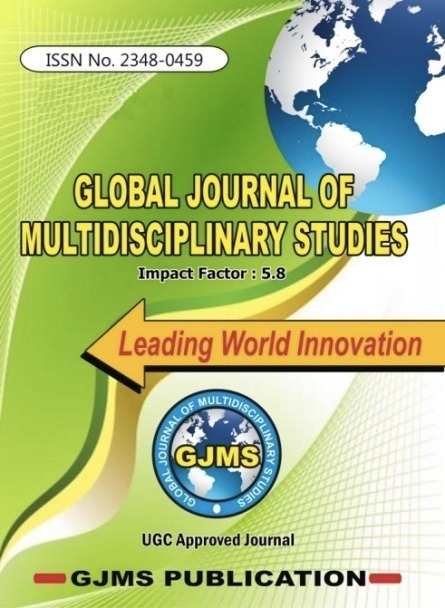A Systematic Review on Explicit and Implicit Aspect Based Sentiment Analysis
Keywords:
Sentiment analysis, Opinion mining, Implicit aspects, Explicit aspects recommendation system.Abstract
Opinion mining is also called as sentiment analysis is a branch of web mining and text mining that is the process of identifying and determining the orientation of individual web users regarding various products, services, social comments on social media, different e-commerce web sites, political issues, hotels, restaurants, emotions or sentiments of individual users about different entities and services of his / her interest on web or internet. OM or SA interchangeably can be used to monitor and build a recommendation system based on individual user’s reviews that can be document based, sentence based or aspect based on reviews. Extracting features or aspects of web based entities or services are a core task of SA. Aspects or features are broadly categorized as implicit and explicit features. The recommendation system based build with such functionality can enable users to improve buying or selling decisions, also it can improve market intelligence, improving manufacturing of products, improving services to users and so on. Most of the time reviews contain clear information (explicit) but, it may also contain information which is not clearly stated or hidden (implicit) that cannot be ignored as may lead to the wrong decision, or recommendation to individual users. This area has many challenging issues or problems that are still unaddressed or unsolved.References
Tubishat Mohammad, et al. “Implicit Aspect Extraction in Sentiment Analysis: Review, Taxonomy, Opportunities, and Open
Challenges.” Information Processing & Management, vol. 54, no. 4, pp. 545–63, 2018
Huang Hen-Hsen, et al. “Implicit Opinion Analysis: Extraction and Polarity Labeling.” Journal of the Association for Information
Science and Technology, vol. 68, no. 9, pp. 2076–87, 2017.
BansariDadhaniya and MaulikDhamecha. “A Novel Approach for Multiple Aspect Based Opinion Summarization Using Implicit
Features.” International Journal of Engineering Research and Technology, vol. V6, no. 05, 2017. K. Elissa, “Title of paper if known,”
unpublished.
Joshi Aditya, et al. “Automatic Sarcasm Detection.” ACM Computing Surveys, vol. 50, no. 5, pp. 1–22, 2017.
Batuhan Kama, et al, “Analyzing Implicit Aspects and Aspect Dependent Sentiment Polarity for Aspect-based Sentiment Analysis on
Informal Turkish Texts”, Association for Computing Machinery, MEDES ’17, November 7–10, 2017, Bangkok, Thailand, 2017.M.
Young, The Technical Writer’s Handbook. Mill Valley, CA: University Science, 1989.
Mohammad Tubishat ,NorismaIdris,” Explicit and Implicit Aspect Extraction using Whale Optimization Algorithm and Hybrid
Approach”, International Conference on Industrial Enterprise and System Engineering (ICOIESE), 2018.
FengJinzhan, et al. “Enhanced Sentiment Labeling and Implicit Aspect Identification by Integration of Deep Convolution Neural
Network and Sequential Algorithm.” Cluster Computing, vol. 22, no. S3, pp. 5839–57, 2018.
MushtaqHusnain, et al. “Implicit and Explicit Knowledge Mining of Crowdsourced Communities: Architectural and Technology
Verdicts.” International Journal of Advanced Computer Science and Applications, vol. 9, no. 1, 2018.
HannachHajarEl, and Mohammed Benkhalifa. “WordNet Based Implicit Aspect Sentiment Analysis for Crime Identification from
Twitter.” International Journal of Advanced Computer Science and Applications, vol. 9, no. 12, 2018.
Irfan Rizwana, et al. “SocialRec: A Context-Aware Recommendation Framework with Explicit Sentiment Analysis.” IEEE Access,
vol. 7, pp. 116295–308, 2019.
KrenMatej, et al. “Modeling Opinion of IPTV Viewers Based on Implicit Feedback and Content Metadata.” IEEE Access, vol. 7, pp.
–62, 2019.
Downloads
Published
Issue
Section
License
Copyright Notice
Submission of an article implies that the work described has not been published previously (except in the form of an abstract or as part of a published lecture or academic thesis), that it is not under consideration for publication elsewhere, that its publication is approved by all authors and tacitly or explicitly by the responsible authorities where the work was carried out, and that, if accepted, will not be published elsewhere in the same form, in English or in any other language, without the written consent of the Publisher. The Editors reserve the right to edit or otherwise alter all contributions, but authors will receive proofs for approval before publication.
Copyrights for articles published in World Scholars journals are retained by the authors, with first publication rights granted to the journal. The journal/publisher is not responsible for subsequent uses of the work. It is the author's responsibility to bring an infringement action if so desired by the author.

